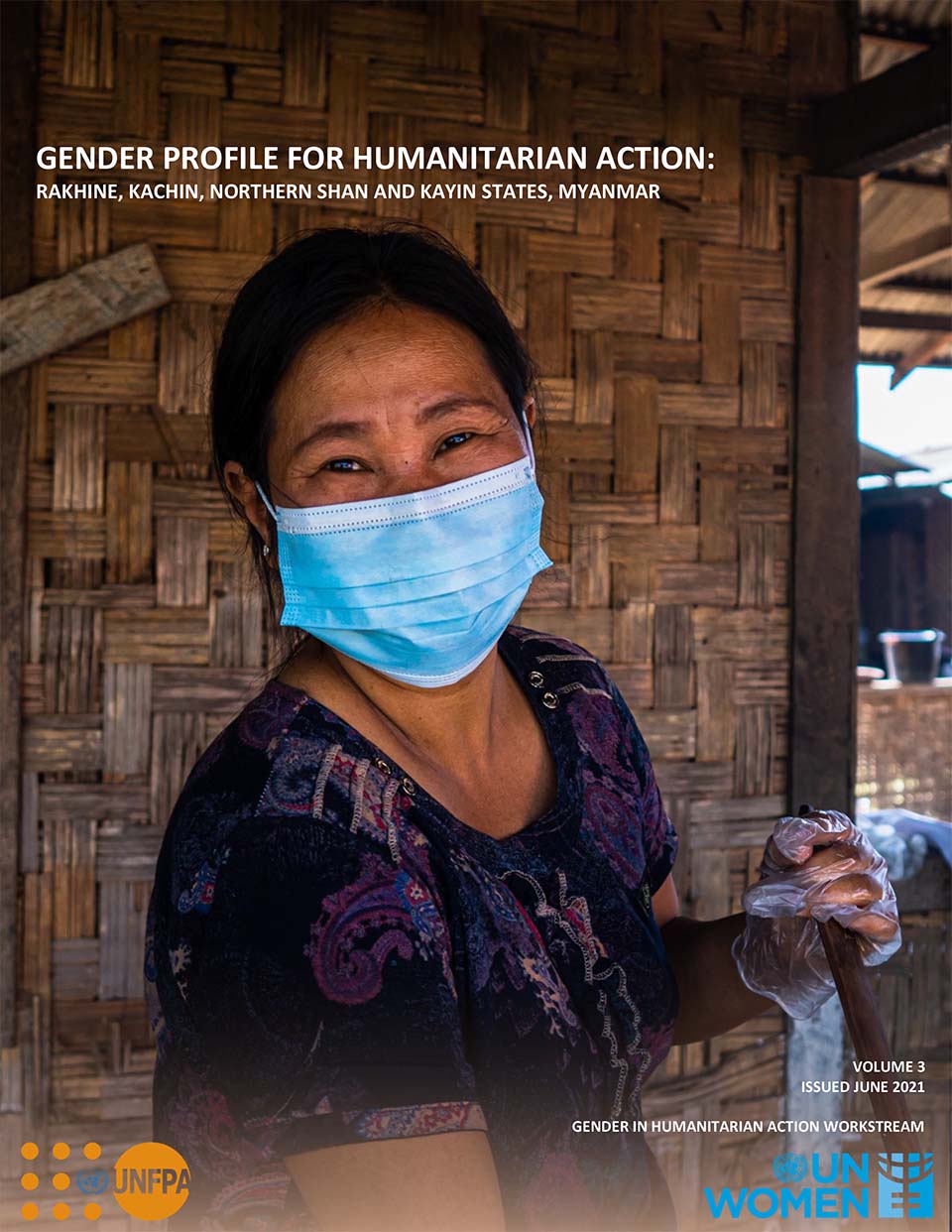
Gender profile for humanitarian action in Myanmar 2021

The 2021 version of the Gender in Humanitarian Action (GiHA) profile includes an analysis of the gender-related impacts of the COVID-19 pandemic and the February military coup in Rakhine, Kachin, Northern Shan and Kayin States in Myanmar.
In 2020 and 2021, the COVID-19 pandemic further complicated the lives of people in humanitarian settings across the country, resulting in significant economic and health impacts. On 1 February 2021, the Tatmadaw, also known as the Myanmar Armed Forces (MAF), seized control over the Government, declaring a year-long state of emergency and detained the country’s top representatives, along with civilian Government officials and prominent civil society members, journalists, as well as countless civilians.
Prior to the coup, humanitarian needs in Myanmar were already vast due to protracted conflict, human rights violations, displacement and natural hazards resulting in 1 million people, of whom 33 per cent women, 19 per cent girls and 18 per cent boys, in need of humanitarian assistance by the 2021 Myanmar Humanitarian Response Plan.1 This includes 336,000 internally displaced people (of whom 29 per cent are women, 20 per cent girls and 21 per cent boys - overall 70 per cent of displaced). The largest population of persons in need are in Rakhine State with 806,000 people, and the second largest population is across Kachin State with 167,000 people in need. Women make up 53 per cent of those in need of humanitarian assistance in Rakhine, and 48 per cent in Kachin.
The GiHA profile provides a summary overview of the overall context for gender equality and empowerment of women and girls in humanitarian action and to highlight key sector-specific and cross-sectional gender issues, needs, gaps, response efforts taken, constrains/challenges to address these and finally recommend strategic goals and action needed to strengthen gender mainstreaming.